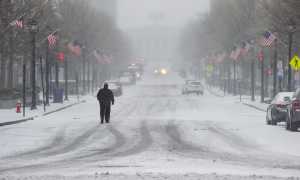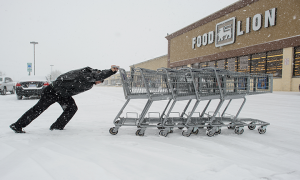Winter Storms
A less uncertain aspect of winter weather is the expected change in the rate or intensity of precipitation, which is likely to increase due to higher amounts of water vapor in a warmer atmosphere.
All forms of winter weather can affect the Carolinas, including snow, sleet, and freezing rain. While a warming atmosphere suggests a decreased potential for frozen precipitation, winter storms will continue to affect the region into the future. Several atmospheric ingredients that come together at just the right time are required to produce wintry precipitation across the Carolinas. Near-to-below freezing air at the surface is required for all types of wintry precipitation, but it remains unclear whether the frequency and/or intensity of this key ingredient might change in a warmer climate. Perhaps the frequency of snowfall events (which require a deeper layer of sub-freezing air from the surface through the lower portion of the atmosphere) will decrease at the expense of increasing sleet and freezing rain events (which require a shallower layer of sub-freezing air compared to snowfall events). A less uncertain aspect of winter weather is the expected change in the rate or intensity of precipitation, which is likely to increase due to higher amounts of water vapor in a warmer atmosphere. This could significantly affect the severity of power outages, motor vehicle accidents, and other societal impacts from winter storms.
Climate Extremes
Select a climate extreme to access tools and learn more about community vulnerability and health impacts.



